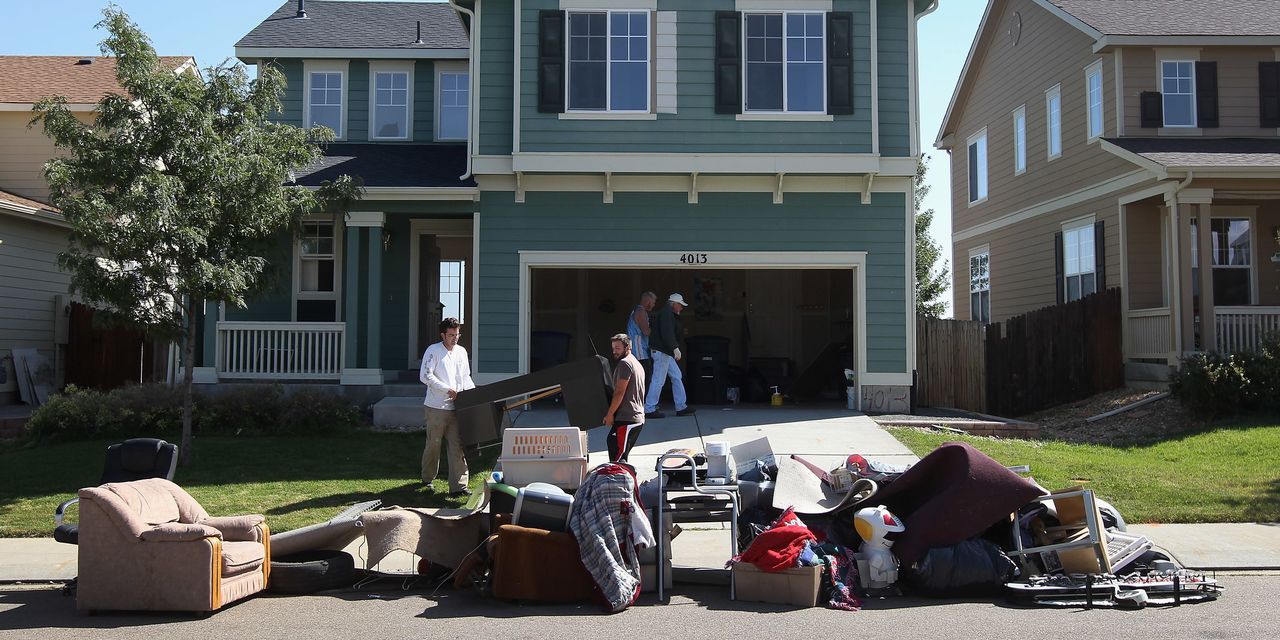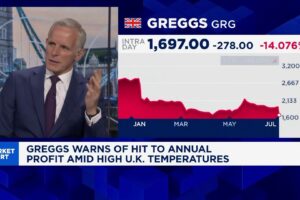
As the federal government hastily stitches together a new safety net for struggling homeowners, housing advocates fear the relief may come too late for some of those hardest hit by the pandemic.
States face a deadline of this Sunday, April 25, to request a piece of the nearly $10 billion Homeowner Assistance Fund created as part of the latest COVID-19 relief package. Those funds can be used to help homeowners with mortgage, insurance, utility and other payments. But program participants must submit their plans for distributing the cash for the Treasury Department’s approval, and even the fastest-moving states are unlikely to start handing out the bulk of the money before late summer, policy experts say.
The Consumer Financial Protection Bureau, meanwhile, is looking to add new protections for mortgage borrowers through a controversial proposal that includes a pause on foreclosure initiations until 2022. Those changes, if finalized, are unlikely to take effect before the end of August.
Don’t miss: How to get in line for homeowner assistance funds
While these relief efforts are under construction, many homeowners need immediate help. “The problem is right now,” says Alys Cohen, staff attorney at the National Consumer Law Center. “If we don’t act quickly, we’ll be facing unnecessary foreclosures in large volume very soon.”
Homeowners in immediate jeopardy include many of those with mortgages that are privately owned and have no federal backing, which account for about 30% of all single-family mortgages and have so far been excluded from nationwide pandemic relief, as well as those who don’t have mortgages but face foreclosure due to failure to pay property taxes — a problem that’s on the rise in many states, housing advocates say. Many federally backed borrowers are also running out of time, as the moratorium on foreclosures for their loans expires at the end of June.
More than a year after the start of the public health emergency, millions of homeowners are still feeling its pinch. Serious mortgage delinquencies — those more than 90 days late — have quintupled since the start of the pandemic, according to mortgage data provider Black Knight. As of late March, nearly 2.6 million borrowers were still in forbearance plans temporarily suspending their payments. Such programs have put the brakes on many foreclosures during the pandemic, but foreclosure filings in the first quarter of this year ticked up 9% from the previous quarter, according to Attom Data Solutions. Some of that increase was likely driven by foreclosures on vacant and abandoned properties, says Rick Sharga, executive vice president at RealtyTrac, a unit of Attom.
“The easy part was getting people into forbearance,” says Julia Gordon, president of the National Community Stabilization Trust, a nonprofit that works to protect neighborhoods from blight. “The hard part is getting them out of forbearance in a way that keeps them in their homes with an affordable payment.”
Brenda Myers, 52, a homeowner in Abbottstown, Pa., knows that all too well. She fears she’ll lose her home of 28 years after her current forbearance expires in June. In the months leading up to the pandemic, she lost her job, her husband died after an expensive nursing-home stay, and she began falling behind on mortgage payments just as the COVID crisis began.
Her ability to work is limited, she says, due to injuries sustained in a car crash. She doesn’t have the money to bring the loan current, she says, and, without income, she’s having trouble getting a loan modification.
“It’s very difficult, and I’m still trying to pay for a funeral,” she says. “Forbearance is good, but it’s not helping homeowners to bring their mortgage current.” Given the time it might take to distribute the homeowner assistance money, she says, “you’re going to see a lot of foreclosed homes.”
The fate of many homeowners like Myers — and potential future allocations to the Homeowner Assistance Fund — will depend on how quickly and efficiently states can distribute their HAF dollars, policy experts say. Treasury will initially give each approved participating state or tribe 10% of its total HAF allocation and will release additional funds when it approves the participant’s plan for distributing the money.
It will likely take several months for state programs to get up and running, says Stockton Williams, executive director of the National Council of State Housing Agencies. Slower-moving states may not get rolling until 2022, says Russell Graves, executive director of the National Foundation for Debt Management, a nonprofit housing counseling agency.
States that want to step on the gas need to learn from past mistakes and — to the extent possible — stick with a standardized playbook, policy experts say. One major precedent for the HAF, the Hardest Hit Fund program established by Treasury in 2010 in response to the last financial crisis, has a spotty track record, housing advocates say. Some states were slow to distribute the money, advocates say; created additional hurdles for homeowners that weren’t mandated by the federal government; and had trouble getting cooperation from mortgage servicers.
States have some leeway to improvise with their Homeowner Assistance Fund programs, which makes some policy experts nervous. Wide variation among state programs “could be counterproductive to getting the money out quickly” and raises concerns about how the funds will be targeted to those most in need, says David Dworkin, CEO of the National Housing Conference. And even though the HAF legislation doesn’t mandate excessive eligibility or documentation requirements, “the question is whether states will snatch defeat from the jaws of victory” by designing programs with more burdensome requirements, says Joseph Sant, general counsel and vice president at the Center for New York City Neighborhoods.
Potential wide variation among state programs is also a concern for servicers operating in many different states, says Meg Burns, executive vice president of the Housing Policy Council, a trade group for mortgage originators and servicers. Treasury has said it will provide a template that participants can use in designing their programs.
Even if the money goes out quickly and smoothly, some advocates say many homeowners could be left out in the cold. “It’s pretty clear that $10 billion is not going to be enough” to help everyone in need, Dworkin says, although it can lay the groundwork for further appropriations from Congress.
Many advocates were also looking for the HAF program to serve as a backstop for borrowers whose mortgages are not backed by the federally chartered Fannie Mae FNMA, +0.41% or Freddie Mac FMCC, +1.67% or by the federal government. But in mid-April guidance, Treasury urged states to prioritize certain federal borrowers, including those with Federal Housing Administration, Department of Veterans Affairs and U.S. Department of Agriculture mortgages.
While that guidance is consistent with the program’s goal of reaching lower-income borrowers and doesn’t exclude non–federally backed borrowers from the program, experts say, it seems to sideline many private mortgage borrowers who do have lower incomes and have in some cases received no pandemic-related relief. “People in private mortgages don’t have any congressional protections right now,” Gordon says, and in some cases have been subjected to harsh terms during the pandemic, such as being told to make a lump-sum repayment when a forbearance expires — a practice that’s not allowed for those with federally backed mortgages. “I was surprised there wasn’t a little bit more focus on covering loans that are private,” she says. “It’s where some of the worst practices are happening.”
The Treasury Department did not respond to requests for comment.
Non–federally backed borrowers would be covered by the CFPB’s proposal to halt foreclosure initiations until 2022, with potential exceptions when servicers have taken certain steps to evaluate other options or made reasonable efforts to contact unresponsive borrowers. But that proposal is also drawing fire from all sides.
In the mortgage industry, one concern is that the proposal could force servicers to violate their contractual agreements with mortgage investors. “The industry can handle it, but I hope this is not a sign of how the bureau is going to behave going forward, because it’s very disruptive,” says David Stevens, CEO of Mountain Lake Consulting, former head of the Mortgage Bankers Association and a former FHA commissioner.
Others see a legal battle brewing. “You do have contract law among the servicers and note holders,” Sharga says. If the rule goes forward, he says, “I would have to assume somebody will challenge that in court.”
“As a general matter,” according to a CFPB spokesperson, the bureau doesn’t believe its rule would require mortgage servicers to violate contracts with investors, but it wants to review comment letters on the issue.
Homeowner advocates, meanwhile, say the CFPB has the authority to halt foreclosure initiations through the end of the year — it’s just not the best idea for many borrowers. Some borrowers, for example, could be at immediate risk if they come out of forbearance in 2022, “and this proposal offers them virtually nothing,” Cohen says.
The rulemaking process will also take months to complete, but “many people, especially with private loans, are coming out of forbearances now or are not in forbearance and need help right now,” Cohen says. These borrowers “need the bureau to establish a standard that all mortgage companies must provide sustainable options to homeowners.”
The CFPB is concerned about some borrowers, including those whose loans are included in private-label securities, falling through the cracks while the rule is finalized, and it’s using other tools to help tackle the problem, says Diane Thompson, a senior adviser at the bureau. In early April, for example, the bureau warned mortgage servicers to be prepared for a surge in borrowers needing help and said it would closely monitor responses to borrower requests.
Cohen also takes issue with aspects of the proposal that have drawn less attention, including a requirement that servicers orally disclose available forbearance options when speaking with borrowers experiencing COVID-related hardships who aren’t yet in such programs. “Many reports point to confusion and misinformation” when borrowers speak with servicers, she says. “Failure to provide anything in writing is a significant weakness in the proposal.”
“Just because you put it in writing doesn’t mean it’s clear and somebody reads it,” Thompson says. “Ultimately what we want, and most homeowner advocates want, is for there to be a more nuanced conversation” that helps borrowers understand their options.







